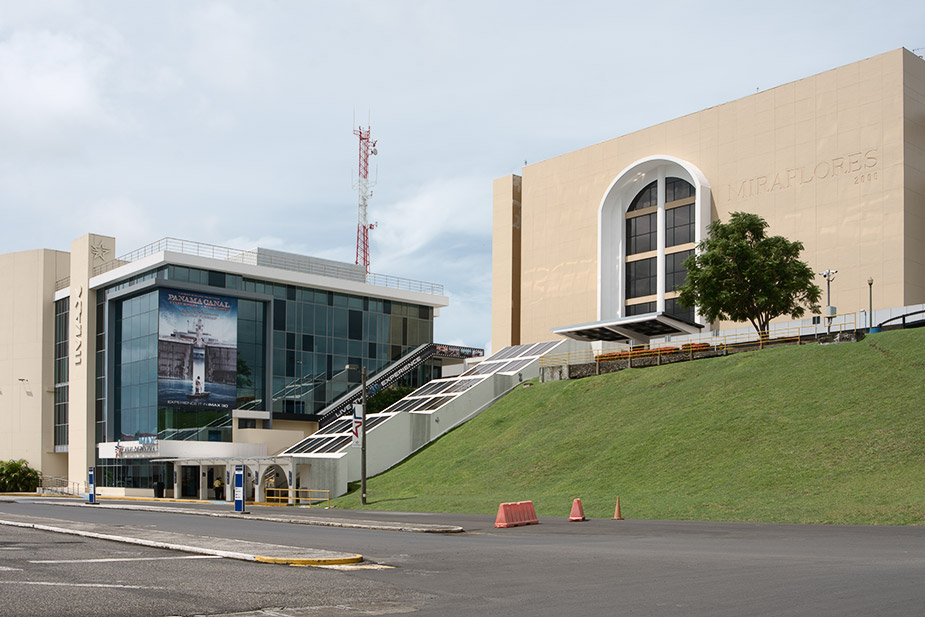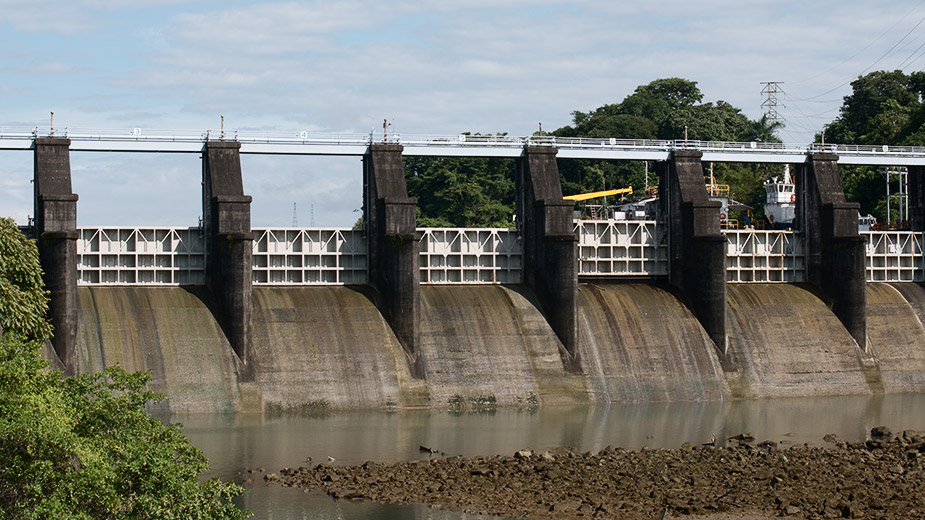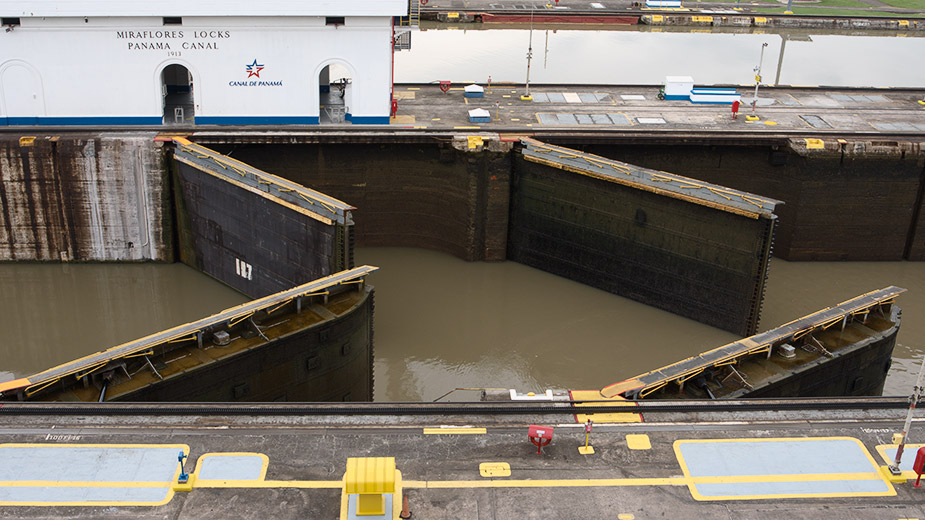

miraflores locks visitor center the panama canal
Inaugurated in 2004, the Miraflores Locks Visitor Center is a beautiful, towering edifice that lies just 150-200 ft. from the canal and provides unparalleled views of Miraflores Locks and the surrounding area. If you want a close-up view of the Panama Canal, there is no better place than the Miraflores Visitor Center.
Unlike the Agua Clara Visitor Center, with its open, sprawling landscape, the visitor center at Miraflores consists of two large buildings. The larger of the two is the official visitor center and the one directly in front of you when exiting the elevator. The smaller building to the left is a 3D IMAX movie theater, which opened in 2018 and reportedly has one of the world’s larger cinema screens. Visitors enjoy a 45-minute-long documentary about the Panama Canal, narrated by Morgan Freeman.


Before reaching the entrance, your tour bus will pass in front of Miraflores Dam, the smallest of the canal’s three dams; the dam resides off to the right side. If you miss it on the way in, you will have another opportunity when departing; you need to be seated on the left side to see it. Upon arriving at the roadside entrance, a fully enclosed elevator leads to the center's main entrance, which is perched high atop a hill. To the left of the elevator is the movie theater entrance, though the movie theater is presently closed.
When entering the visitor center, there is a large open atrium with tall glass windows and doors along the back wall. Illustrations and photographs relating to the canal decorate the atrium's walls and pillars. Immediately to the right, you will find a gift shop, public bathrooms, and two elevators. Behind the elevators is a staircase that provides access to all four floors. Behind and to the left of the gift shop is the museum entrance, and along the left wall is a presentation room for short video productions.
The combination of elevators and stairs should allow you to move quickly and easily between floors. Unless it is overly crowded, getting around should not be a problem. If you need a refreshment, there is a small snack store outside on the ground level, beneath the lower observation deck.
Due to its proximity to the locks, museum, 3D IMAX movie presentation, and open viewing platforms, I prefer the Miraflores Visitor Center to its sibling at Agua Clara Locks. Overall, it is a more comprehensive presentation that feels more connected to the canal.
The rear doors lead to the first observation deck, which resides on the second floor. The bleacher seats are padded and spacious, giving a clear ground-level view of the locks. Around the seating area, there is ample space to walk around and view the setting. Along the edge is a waist-high handrail that at no time obstructs your view.
The second viewing platform, which resides on the fourth floor, or rooftop, can be accessed using the staircase or elevators. Like the second-floor viewing platform, there is a roof overhead. However, the additional elevation delivers a more panoramic view of the locks and their environs. Weather permitting, Miraflores Lake, Pedro Miguel Locks, Centenary Bridge, and even parts of Cocoli Locks — the new set of locks — are visible.
Irrespective of your viewing platform, everything is right in front of you: the control tower, chambers, electric mules, tug boats, and ships. You can watch as the vessels are lifted and lowered, the chamber doors open and close, and the ships, accompanied by electric locomotives, move from one chamber into another.


It is important to note that Miraflores Locks was built during the initial construction era over 100 years ago, whereas Agua Clara Locks are only five years old. They are two completely different designs, and their respective visitor centers deliver different experiences. Each is unique and with something special to offer. Electric locomotives, for example, are not utilized in the new set of locks; you will only see them in Miraflores. Likewise, two tugboats accompany transiting vessels in the new locks but not in Miraflores.
The museum consists of four exhibits or galleries, each assigned to a separate floor. An elevator along the back wall will take you from one to another. All of the exhibitions display descriptive text in both English and Spanish.
The first floor is devoted to the canal's history and initial construction era. Black and white historical pictures canvas the walls, and artifacts and mini-exhibits relating to that period are plentiful. The second floor is more open and focuses exclusively on the animal and plant life endemic to the Panama Canal watershed. The third floor revisits the canal and includes a reproduction of one of its lock chambers. Finally, the fourth floor delves into the canal's operating procedures and the recent expansion that culminated in 2016.
An abundance of intricate miniature models encased in glass enclosures is present throughout the museum. Most of them represent commercial ships and maintenance/construction vessels that operate in the canal. Their attention to detail is breathtaking — you could spend half a day looking at them.
The museum is a must-see for anyone visiting. It is well-thought-out, and the presentation is first-rate.
Buses to Miraflores Locks depart regularly from the Albrook Bus Terminal and take only 15-20 minutes. Buses that read "Miraflores" will take you to the visitor center's entrance, whereas buses that read "Forestal" and "Summit Gardens" will drop you off along the main road passing in front of the locks.
If you take the latter, you will need to walk 5-10 minutes to the visitor's center. From the roadside, walk along the right side of the entrance road; there is a yellow metal railing.
After passing through the entrance gate, continue walking until you cross over the newly built cement bridge; you will see the Miraflores Dam off to your right. Depending on the ocean tide, you may see crocodiles basking in the sun in the shallow water under or near the bridge.
After crossing the bridge, follow the walking path to the left, and proceed until you reach the large staircase/elevator that leads to the main entrance. Do not follow the asphalt road up the hill.